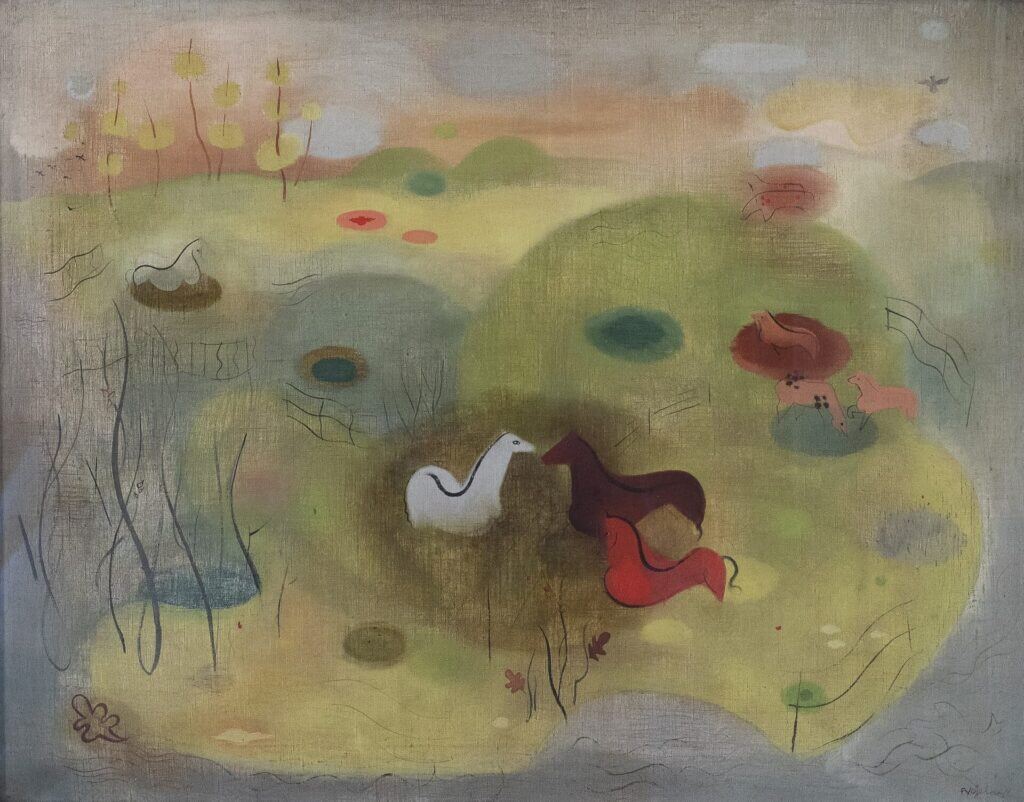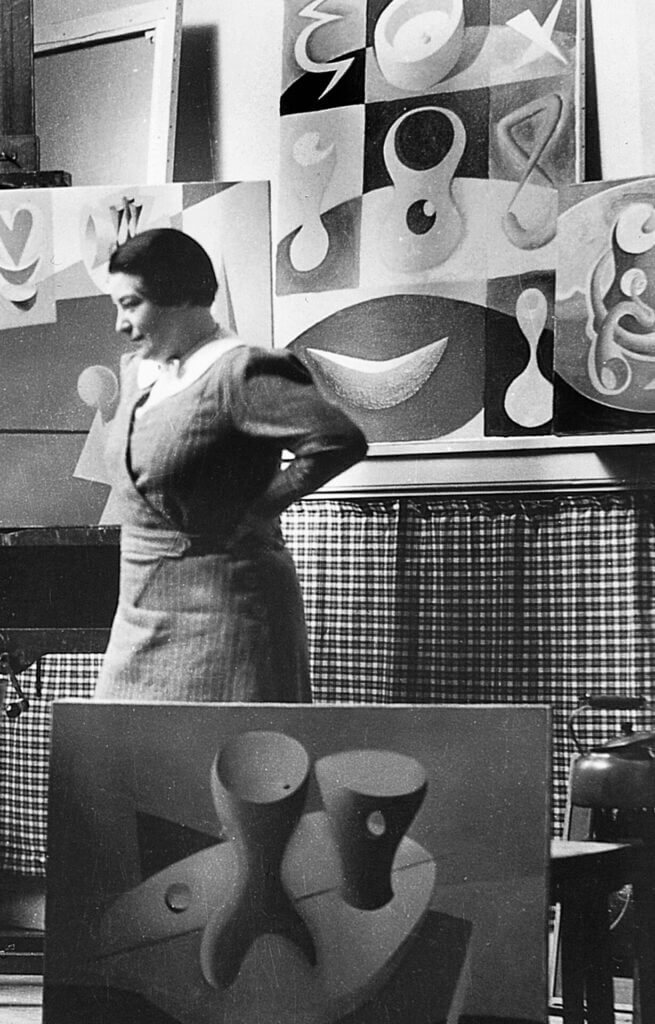Your currently viewing RAW Modern | Switch to RAW Contemporary
Paysage, Three Horses, 1929
Catalogue essay by Blanche Llewellyn
Paule Vézelay, born Majorie Watson-Williams, changed her name to obscure both her nationality and gender. She also felt her new moniker better suited the modernism of her practice. A British artist, she embarked on her career as a figurative painter but during her residency in Paris, her so-called country of adoption, from 1926 to 1939, she transitioned from figurative to abstract painting. In France, she became closely associated with André Masson, Jean Arp, and Sophie Taeuber-Arp, and in 1934, she joined the avant-garde group Abstraction-Création.
Paysage, Three Horses is typical of Vezelay’s work from the late 1920s, with its semi-automatic technique and semi- abstract, linear motifs. It was painted the year she resided with André Masson – he was soon to be divorced and she was accepted by his family and even introduced by them as “Madame Masson”.
Their relationship forested a mutual influence on their artistic development (In Masson’s works, such as In the Cave painted 30-years later in 1957, the inspiration of Vezelay can still arguably be felt .)
The much-publicised discovery of Palaeolithic-era cave drawings in the Atxurra caves of northern Spain in 1929 undoubtedly influenced both the landscape, horses and drawing style of this work. Vézelay admired the raw, unfiltered nature of these artworks – primal instincts and emotions – and aura of mystery –which resonates with the surrealist’s quest to unlock the mysteries of the human psyche.

